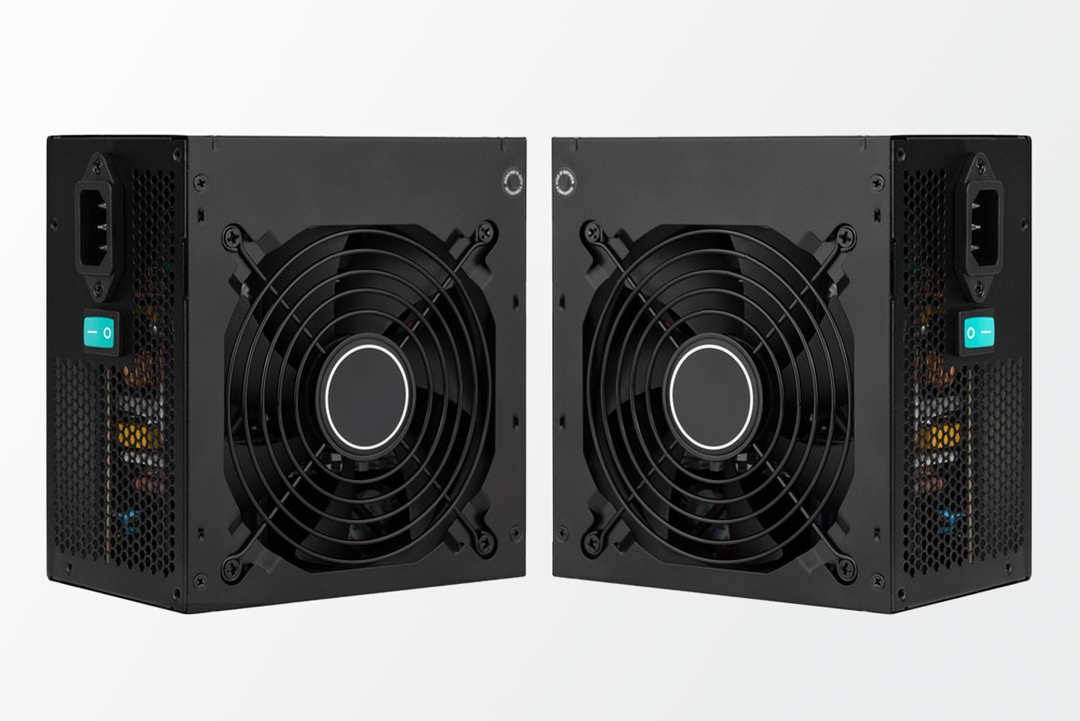When choosing a computer case cooling fan, many users may feel confused, especially those who are not familiar with the technical specifications and performance of cooling fans. Cooling fans are not just about aesthetics; they play a crucial role in temperature control inside the case, the long-term stability of the equipment, and its lifespan. Therefore, selecting the right cooling fan is particularly important.
As a manufacturer with 25 years of experience in producing cooling fans, Ruiapple Electric is committed to providing efficient and reliable cooling solutions. Over the years, we have accumulated valuable experience in working with customers. Here are several key factors to consider when purchasing a computer case cooling fan, to help you make a more informed decision.

1. Determine the Required Model and Key Specifications
First, when purchasing a cooling fan, you must clarify your needs, including the case size, the installation position of the fan, and other specific requirements. Basic specifications of cooling fans include:
Voltage: Ensure that the fan’s voltage is compatible with your power system. Common voltage specifications include DC (5V, 12V, 24V, 48V) and AC (110V, 220V, 380V). Incorrect voltage selection can lead to fan damage or severe equipment malfunction.
Bearing Type: Common bearing types are ball bearings (marked “HB”) and sleeve bearings (marked “HS”). Ball bearings generally last longer, usually 30,000 to 50,000 hours, while sleeve bearings last around 10,000 to 30,000 hours.
Materials and Craftsmanship: The fan frame material is typically aluminum alloy or metal, while the blades are commonly made of PBT plastic. For DC fans, the frame and blades are mostly made from PBT to ensure heat resistance and corrosion resistance.
2. Check Voltage and Label Information
After receiving the cooling fan, check the label to ensure the voltage is clearly marked and accurate. DC and AC fans have different voltage specifications, and connecting the wrong voltage can damage the fan and potentially cause more severe safety issues. Before installation, confirm that the voltage range on the label matches your power system.
3. Bearing Type and Its Impact
As mentioned earlier, selecting the appropriate bearing type is crucial. Ball bearings provide higher stability and longer lifespan, making them suitable for applications that require long fan life. Sleeve bearings are more economical but have a shorter lifespan. Choose the bearing type based on your application requirements to effectively extend the fan’s lifespan.
4. Power Cable and Safety
The quality of the power cable is critical to the safety of the fan. Check for any damage, exposed wires, or wear on the power cable. If any issues are found, replace the cable immediately to avoid electrical short circuits or potential electric shocks. High-quality cables typically offer good insulation, ensuring safe operation.
5. Check Copper Wires and Stator Materials
The materials and craftsmanship of the fan’s motor components, such as the copper wire and stator, directly impact the fan’s performance and lifespan. High-quality fans usually use pure copper wire or copper-clad aluminum wire, while low-quality products might use iron-clad copper wire, which significantly reduces fan speed and efficiency. Similarly, high-quality stators are typically made from pure steel, while lower-end products may use steel strips, affecting the motor’s performance and durability.
6. Environmental Adaptability
The working environment of the cooling fan must be considered. Most cooling fans have an operating temperature range of -20°C to 80°C and a humidity range of 20%-85%. If your operating environment exceeds these limits, consider choosing fans made from aluminum or metal frames and blades, as these materials offer better temperature resistance and corrosion resistance.
7. Noise Levels
Noise is an important factor to consider when selecting a cooling fan. If the fan makes unusual sounds, it could be due to oil shortage in the bearings, a misaligned stator, or bearing damage. Fans with sleeve bearings may experience noise if improperly lubricated or used, while ball bearing fans are generally quieter, but noise can arise if the ball bearings are damaged or the bearing cap is loose. Choosing high-quality bearings and conducting regular maintenance can significantly reduce noise issues.
8. Fan Failure or Malfunction
If the fan stops working during operation, the most common causes are a damaged blade, incorrect voltage, or a loose power cable. In particular, if the AC voltage is incorrect, the fan may start initially but stop a few minutes later. To prevent this, ensure the fan and power supply match and regularly check the stability of the wires and connection ports.
Choosing a computer case cooling fan is not just a simple selection process; it directly impacts the efficiency of your case's thermal management system and the long-term stability of the equipment. By screening and confirming the key factors mentioned above, you can select the most suitable fan for your needs, ensuring the cooling system’s efficiency and reliability.
With 25 years of experience in manufacturing, Ruiapple Electric is dedicated to providing high-quality, cost-effective cooling fan solutions. Our products are not only stable in performance and long-lasting but also excel in noise control, energy efficiency, and safety. Feel free to contact us for professional advice and technical support. Let us help you make the smartest fan selection decision.






